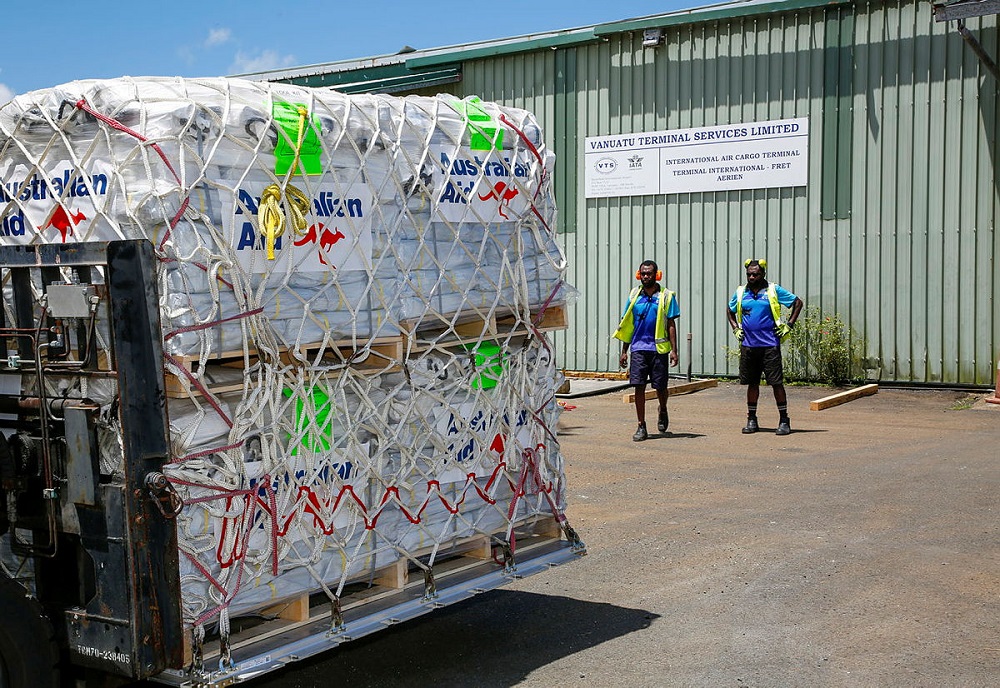
It will surprise some, and disappoint others, that the Department of Foreign Affairs and Trade’s new policy statement on international aid has drawn so little apparent interest from its intended beneficiaries.
Australia’s Pacific neighbours should have a keen interest in any statement on this, given Australia’s position as the region’s most significant source of official development assistance. Foreign Minister Penny Wong has been a frequent visitor to the Pacific to demonstrate the government’s elevated interest in the region and to assure the region that she has been listening to criticisms of the previous government’s approach to aid policies, which were seen as tight-fisted and misdirected.
Aside from a desire to demonstrate that there was a new game in town, in a decade characterised by changing trade patterns, Covid-19 and its impacts, demographic change and rapidly evolving geostrategic dynamics, a comprehensive review of Australia’s aid priorities is timely.
So, why has the document generated so few ripples across the Pacific?
There are several reasons.
From the perspective of the Pacific island regional states, one of the more important signals in Australia’s international development policy may be in its subtitle, which reads, ‘For a peaceful, stable and prosperous Indo-Pacific’.
This choice reinforces the perception that Australia sees its relationship with the Pacific islands firmly from a security perspective—and as just one part of an increasingly consistent Indo-Pacific strategy.
There’s little appetite among Pacific island countries for blurring the boundaries of their unique regional identity, especially by being absorbed into an area of focus that includes more than half of humanity.
Since ‘Indo-Pacific’ became a term of art in global geopolitics, Pacific island countries have had legitimate concerns about the idea marginalising them and their interests. Their small size and strategic importance make them vulnerable to manipulation, and they risk seeing their needs subsumed by the great-power security concerns this new mega-region’s conception alludes to.
Basically, for the Pacific island countries the idea of the Indo-Pacific carries considerable baggage, securitises discussion and invokes fear of Chinese influence and related global security tensions.
The strengthening of regional security arrangements such as the Quadrilateral Security Dialogue, the AUKUS agreement and the recent trilateral ties brokered between Japan, South Korea and the US only serve to fuel these concerns.
Referencing AUKUS particularly, Meg Taylor, a former secretary-general of the Pacific Islands Forum Secretariat, underlined the region’s wariness about the Indo-Pacific concept, saying that the Pacific ‘should have paid much more attention to the Indo-Pacific strategy as it emerged’.
The focus of Australia’s new aid policy appears to continue a trend where the Pacific region’s traditional Western friends seek to promote their Indo-Pacific security agenda through development assistance—the Partners in the Blue Pacific initiative was one example of this.
Another example emerged this month when Ely Ratner, the US assistant secretary of defence for Indo-Pacific security affairs, celebrated the reopening of the USAID office in Suva, Fiji, by referencing the same defence initiatives raised by Secretary of Defense Lloyd Austin in his address at the 2023 Shangri-La Dialogue.
Apart from the region’s caution towards the Indo-Pacific concept and securitisation, it can also reasonably doubt that the concept is a useful way of scaffolding the delivery of development assistance to the Pacific islands. But this appears more confected than substantive.
DFAT’s aid policy document regularly refers to the Indo-Pacific broadly as ‘our region’, but the development needs of Southeast and South Asian states require solutions that are impracticable in the Pacific island states.
This inherent diversity is clear from the document’s reference to working with and through ‘regional architecture’ even though there’s no inclusive and coherent Indo-Pacific regional framework. Instead, there are separate sets of regional architecture in the Pacific islands, Southeast Asia and South Asia which, to some extent, will be competing for Australian assistance.
Another key reason for the policy’s failure to make a big splash is the aspirational nature of the announced policy changes.
Informal feedback from island sources, while approving of the policy’s general objectives, questioned how commitments to priorities such as climate change, gender equality and public-sector collaboration will be translated into concrete actions with specific strategies and targets.
The document isn’t intended to be specific. Nevertheless, it does raise eyebrows over how its new policy settings will appear on the ground. The devil will always be in the detail and some examples of implementation imps are already visible.
For instance, the Pacific Australia Labour Mobility scheme is justly touted as a game-changer in Australia’s Pacific relations. It has made a huge difference to regional relations by providing Pacific workers access to employment in Australia. Building on the scheme makes great practical and diplomatic sense.
However, changes to the scheme to make it more worker-friendly have already generated pushback from agriculturalists on the grounds that they will force unworkable conditions on the Australian participants.
Similarly, the policy document’s assertion that Australia ‘will strengthen trade and business ties with the region, including through Australian banks’ raises questions as to how much influence the government can wield in the private sector.
A 2022 analysis found that Australian banks had largely abandoned the region, with only one of the four major banks, ANZ, retaining a physical presence in many Pacific island states. It’s hard to see Canberra having the levers to reverse this trend.
Locating Australia’s new development assistance policy in the Indo-Pacific concept probably won’t be a significant impediment to pursuing the positive policy goals of joining the regional consensus on climate change, embracing the Pacific’s 2050 Strategy for the Blue Pacific Continent, and making Australian aid easier to access.
However, it’s also unlikely to advance Pacific island countries’ acceptance of the Indo-Pacific as a regional identity, especially one that’s relevant to solving their problems and meeting their national needs.

